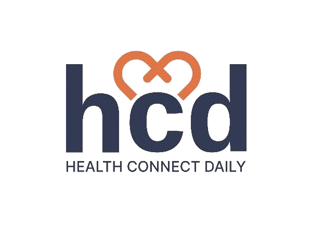
Chronic pain is more than just lingering discomfort—it’s a condition that rewires the brain, impacts mental health, and costs billions annually in healthcare and lost productivity. Despite numerous interventions, many sufferers find little relief. But what if the key to breaking this cycle isn’t a new drug or surgery—but a shift in how we understand pain itself? Enter Pain Neuroscience Education (PNE), a cognitive-based approach that’s transforming how clinicians treat chronic pain.
What Is Pain Neuroscience Education?
Pain Neuroscience Education is a method of teaching patients about the biology and neurophysiology of pain. It helps individuals understand that pain is not always a direct indicator of tissue damage but a complex output of the nervous system influenced by stress, fear, past experiences, and beliefs.
Rather than viewing pain as a purely mechanical issue—like a worn-out joint or a bulging disc—PNE encourages patients to reconceptualize pain as something that can be modulated by the brain. This re-framing often reduces fear and avoidance behaviors that worsen chronic pain.
The Science Behind Chronic Pain
To appreciate the power of PNE, it helps to understand the neuroscience of pain. Pain originates in the brain, not the body. Sensory nerves transmit information about potential threats (like heat, pressure, or inflammation) to the spinal cord and up to the brain. But it’s the brain that decides whether to interpret those signals as “painful.” In chronic pain conditions, the brain often becomes hypersensitive, misinterpreting harmless signals as threats. This phenomenon is known as central sensitization, and it’s a core target of Pain Neuroscience Education.
By teaching patients that their pain may no longer reflect real harm, PNE reduces the emotional and psychological amplification that often perpetuates suffering.
How PNE Works: The Therapeutic Process
Pain Neuroscience Education isn’t a one-time lecture. It’s an interactive process involving:
- Metaphors and analogies (like comparing pain to a car alarm that won’t shut off),
- Visual aids (brain scans, nerve pathway diagrams),
- Open dialogue about the patient’s beliefs and fears,
- Cognitive reframing to rewire maladaptive thought patterns.
Clinicians often pair PNE with physical therapy, graded exposure to movement, mindfulness, and other strategies to reinforce the idea that movement is safe and healing.
Clinical Evidence: Does PNE Actually Work?
The research on PNE is promising. Multiple randomized controlled trials have shown:
- Reduced pain intensity in people with chronic back pain, fibromyalgia, and osteoarthritis.
- Improved function and mobility, especially when combined with exercise therapy.
- Decreased fear-avoidance behaviors, which are strongly correlated with disability.
- Improved quality of life and reduced catastrophizing.
A 2020 meta-analysis published in The Journal of Pain found that patients receiving PNE experienced significant improvements compared to controls, particularly in understanding pain and reducing fear-based behaviors.
Who Can Benefit Most from PNE?
Pain Neuroscience Education isn’t a cure-all, but it’s particularly effective for:
- People with persistent musculoskeletal pain (e.g., back pain, neck pain, joint pain),
- Individuals diagnosed with fibromyalgia or chronic fatigue syndrome,
- Patients struggling with post-surgical pain that doesn’t resolve,
- Those with complex regional pain syndrome (CRPS),
- People who have developed kinesiophobia (fear of movement) after injury.
Because PNE targets the way the brain processes pain, it’s suitable for a broad range of conditions where pain persists beyond the typical healing time.
Pain, the Brain, and the Biopsychosocial Model
Traditional biomedical models view pain as a sign of physical damage. But PNE is rooted in the biopsychosocial model, which considers:
- Biological factors (inflammation, injury),
- Psychological factors (stress, anxiety, catastrophizing),
- Social influences (isolation, lack of support).
This holistic approach acknowledges that two people can experience the same injury very differently—because their brains interpret the threat differently based on prior trauma, mindset, and emotional resilience.
Integrating PNE Into Standard Care
Despite its effectiveness, PNE isn’t yet widely implemented across all healthcare settings. Barriers include:
- Lack of clinician training, especially among primary care providers,
- Time constraints in busy clinics,
- Skepticism from patients accustomed to structural explanations of pain,
- Insurance coverage limitations for non-pharmacological education.
However, more physical therapists, pain psychologists, and integrative health practitioners are incorporating PNE into treatment regimens. Some are even delivering it via digital platforms, mobile apps, and telehealth sessions.
PNE vs. Pain Medications
It’s important to note that PNE doesn’t replace medication for everyone. But unlike opioids or NSAIDs, which offer short-term relief without addressing underlying neural patterns, PNE changes the way pain is perceived and processed.
In some cases, this shift can lead to a reduction or elimination of medication dependency, particularly when used alongside lifestyle changes like better sleep, movement, and stress management.
Final Thoughts: Rethinking Chronic Pain
Pain Neuroscience Education offers a revolutionary lens through which we can view—and treat—chronic pain. By helping patients understand that pain is a protective signal, not necessarily a sign of damage, PNE empowers them to take back control.
For the millions living with daily discomfort, this education might be the most important prescription they’ve never received.
FAQs
What exactly is Pain Neuroscience Education?
Pain Neuroscience Education (PNE) teaches people how pain works in the brain, helping them understand that chronic pain doesn’t always signal actual damage.
Does PNE require physical therapy?
While PNE is powerful on its own, combining it with physical therapy often yields better outcomes by reinforcing the idea that movement is safe.
How long does it take to see results from PNE?
Many patients report mindset shifts after just a few sessions, though sustained improvement often takes several weeks of education and practice.
Can I try PNE at home?
Yes. There are books, YouTube videos, and online programs that teach the principles of PNE, but working with a trained provider is ideal.
Is PNE backed by scientific evidence?
Absolutely. Dozens of clinical trials and meta-analyses support its efficacy in reducing chronic pain and improving quality of life.
